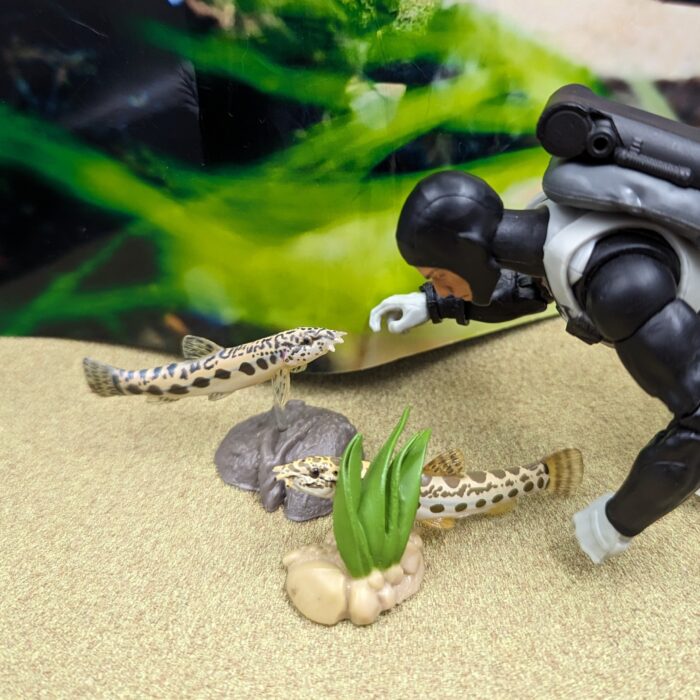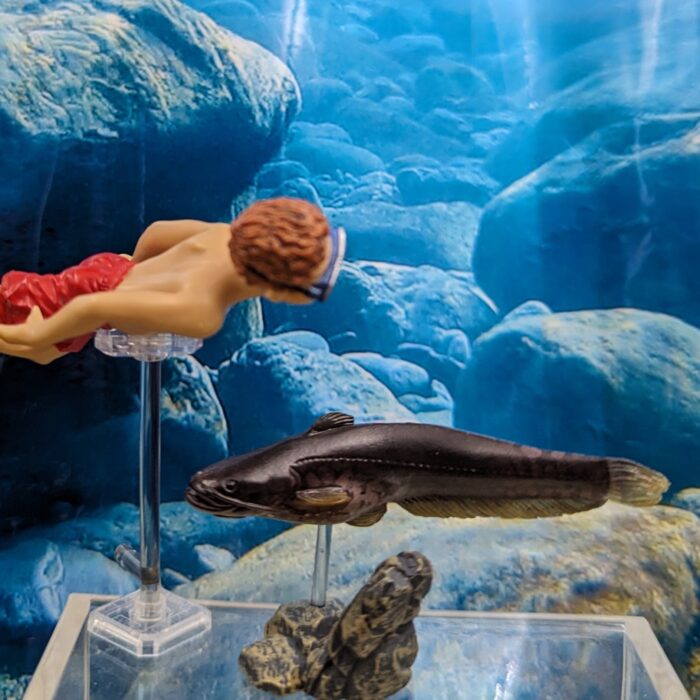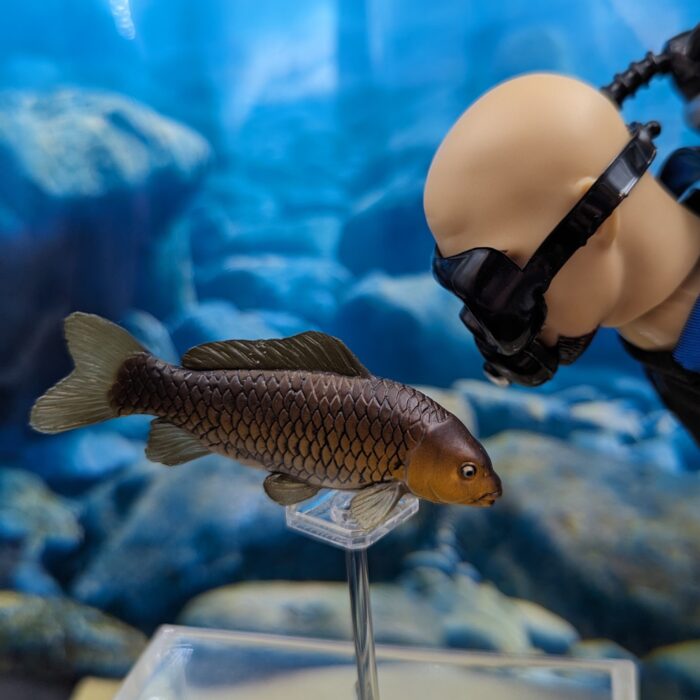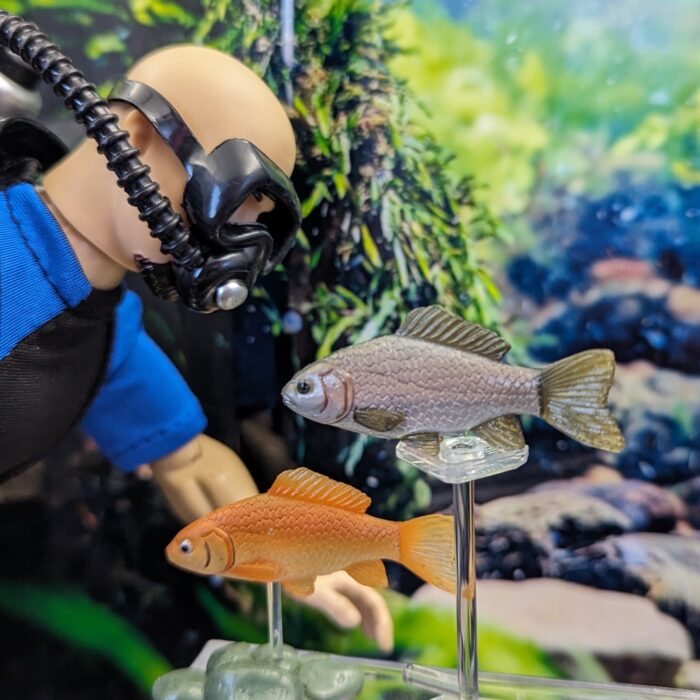This figure is the Japanese Spined Loach (or Japanese striped loach), Cobitis biwae , model 22, and number 7 from the second series. This is a small, long-bodied loach endemic to Japan, there are numerous potential subspecies but no distinction was made with the model. There are actually a number of similarly-patterned loach species in many parts of Japan, but so far this is the only species specifically identified on figures.
Amur Catfish (Freshwater Fishes Book 2, second release by Yujin)
Kidako Moray Eel (World Fishing Monster Fish by Takara Tomy A.R.T.S.)
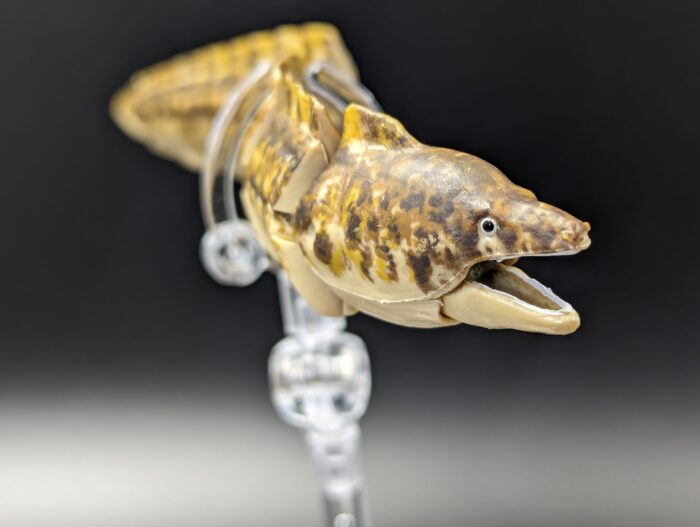
I recently discussed a pair of figures from a Takara Tomy set featuring some unique fish species that are visually or culturally striking. Species that are notable for being scary looking, notorious, and somehow engaging for fishing (I think). I tried to translate the papers and it appears to be called World Fishing Monster Fish, but I can’t be certain.
Amur Carp (Freshwater Fishes Book 2, first release by Yujin)
Japanese Perch (Freshwater Fishes Book 2, first release by Yujin)
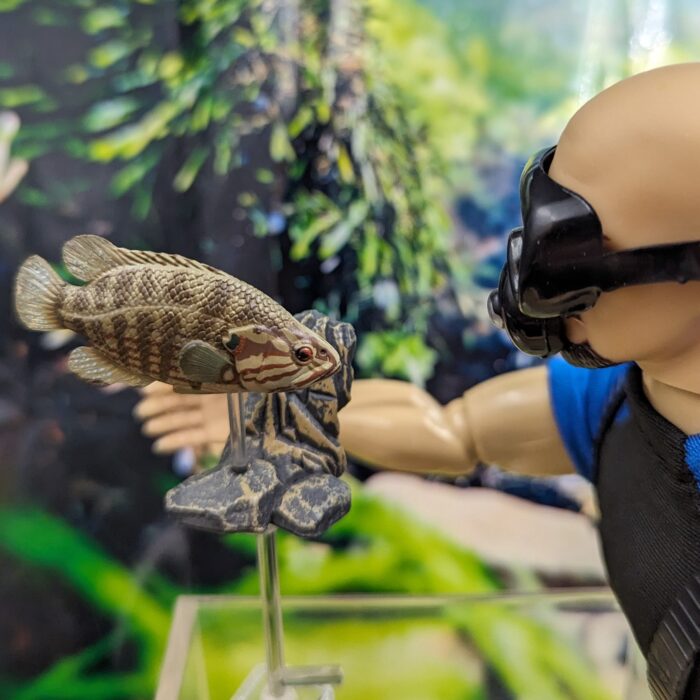
This figure is the Japanese Perch (also known as Aucha perch or Oyanirami in Japan), Coreoperca kawamebari), model 19 and number 4 from the second series, second release. This is a small-sized predatory perch that lives rivers and streams. Often in the middle parts of the water column hunting for invertebrates and anything else.
Dung Beetle (Jasman)
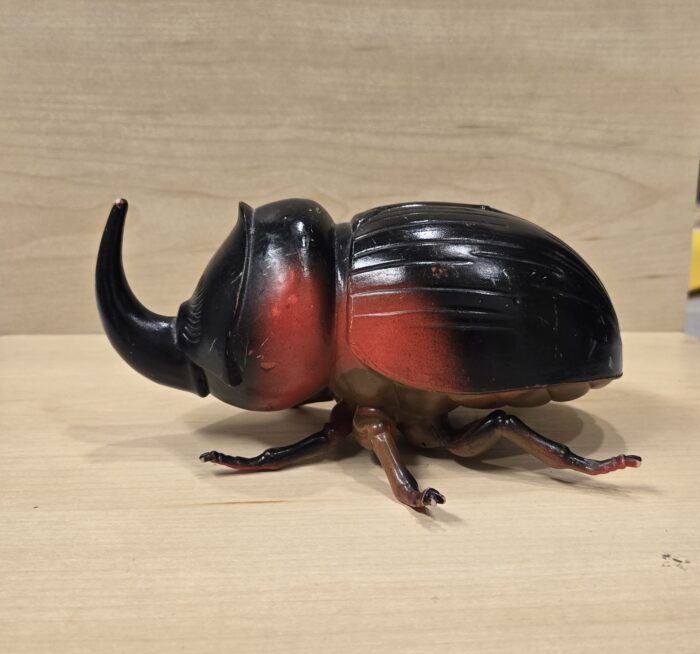
Copris acephalus (Coleoptera: Scarabaeidae: Scarabaeinae), an enigmatic new species of dung beetle from the Bolivian Altiplano
keywords: Copris, Scarabaeidae, new species
Abstract. Copris acephalus Mathison, new species is described from the Bolivian Altiplano. The new species possesses a series of bizarre autapomorphies not previously seen in the genus Copris, the family Scarabaeidae, or even the order Coleoptera.
Eurasian Spoonbill (Wild Animals by Papo)
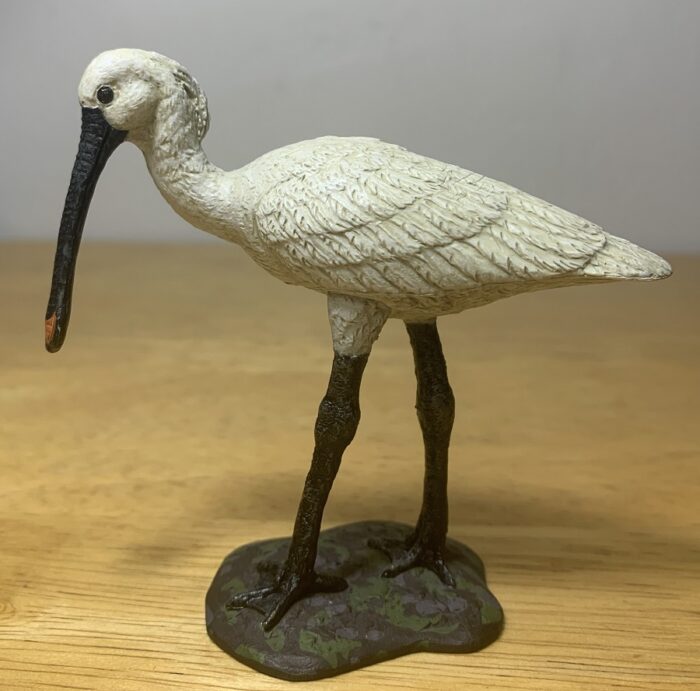
Some of my favorite birds are the spoonbills of the genus Platalea within the Threskiornithidae family. Spoonbills are wading birds found on every continent except Antarctica and characterized by the broad, flatted tip on their bills. Sweeping their bill back and forth underwater, spoonbills use their bill tip to gather up small invertebrates, amphibians, and fishes.
Willow Shiner (Freshwater Fishes Book 2, first AND second release by Yujin)
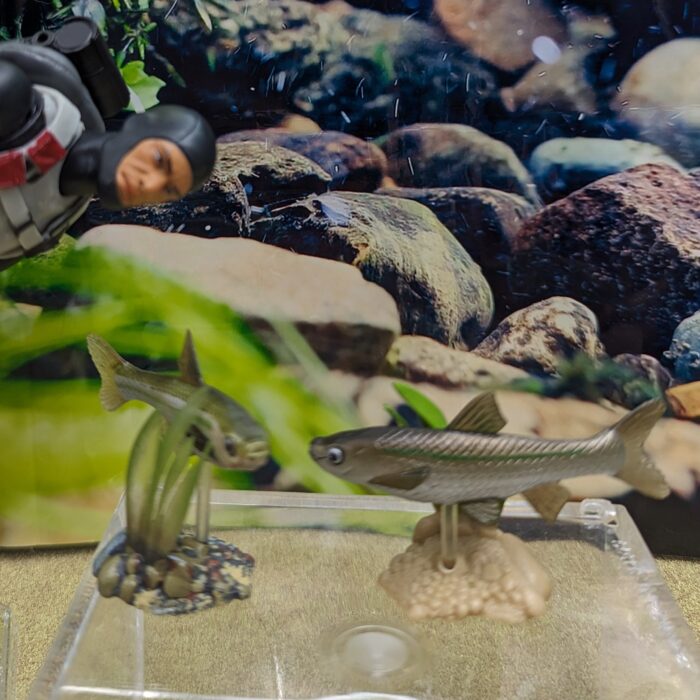
This figure is the Willow Shiner (or in Japan, Honmoroko), Gnathopogon caerulescens, model 18 and number 3 in the second series. At the original time of writing, this was one of two species out of the whole series that I didn’t have. Then I was able to get both versions at once…
Note: with two versions, I am putting up photos as side-by-side ‘galleries; with release 1 (darker coloured) on the left, release 2 on the right.
Bluespotted Ribbontail Ray (24PCS Mini Ocean Animal Figurines by Toymany)
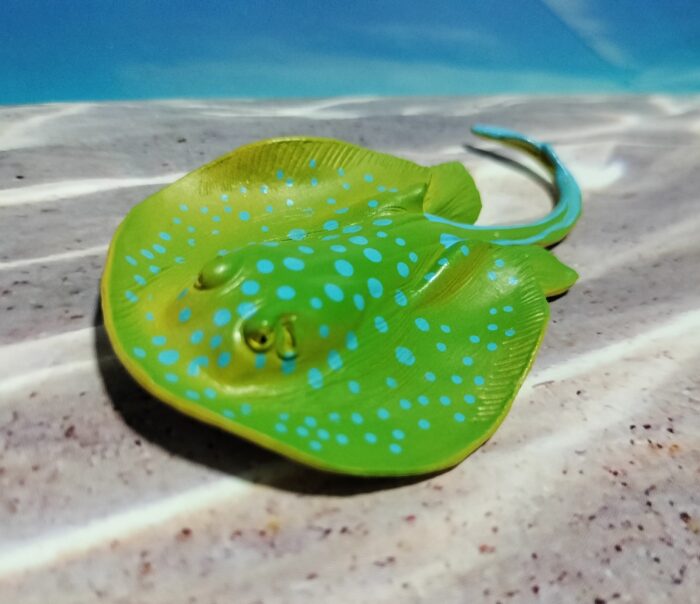
Review and images by JimoAi; edited by bmathison1972
The bluespotted ribbontail ray (Taeniura lymma) is a small stingray inhabiting shallow seas and reefs throughout the Indian and Western Pacific Oceans. These rays don’t exceed 35 cm in finspan and 71 cm from snout to the tip of the tail.
Goldfish, secret version (Freshwater Fishes Book 2, second release by Yujin)
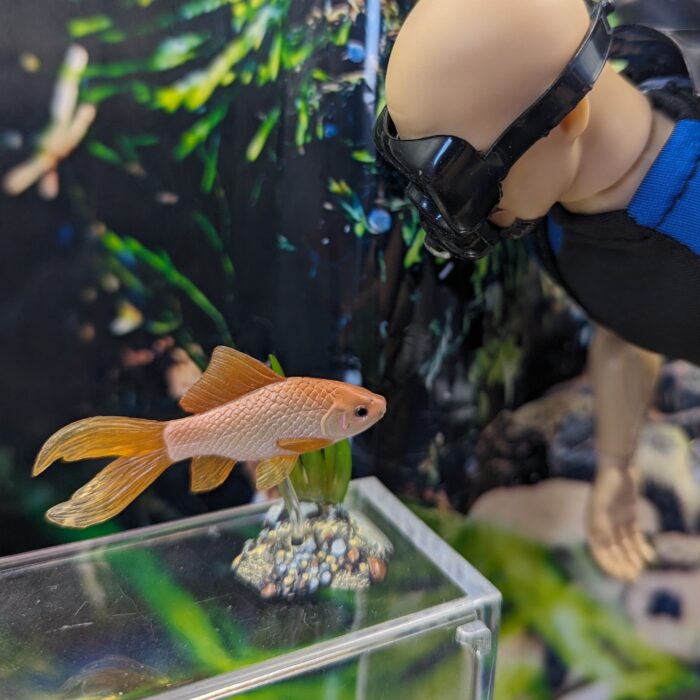
This figure is the Common Goldfish, Carassius auratus, model number 17, from the second series. There are a couple of different ‘wild’ versions in Book 2, but for whatever reason I don’t have either one of them. Instead, this is the Secret domestic version, which is listed as number 17 in the series.
Japanese Silver Crucian Carp, secret version (Freshwater Fishes Book 2, second release by Yujin)
Rattlesnake (Wildlife by Mojö Fun)
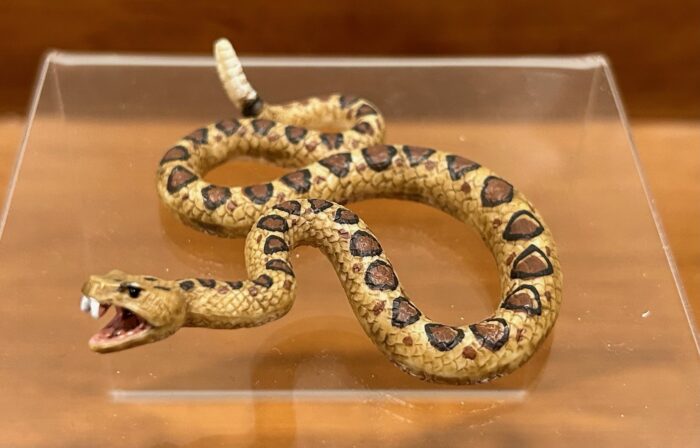
Review and images by Suspsy; edited by bmathison1972
Ranging from southern Canada all the way down to Argentina, rattlesnakes are a large group of pit vipers famous and feared for their venom and their rattling tails. Despite their negative reputation, they are in truth important predators of rodents, helping to balance ecosystems and prevent crop damage.

